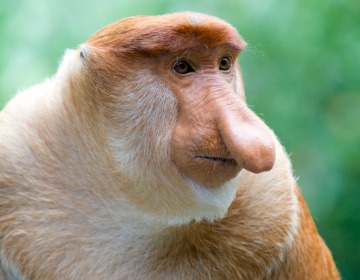New microbes discovered in beetles, a monkey and on a leaf
Posted on May 5, 2021 by Laura Cox
Each month, the Microbiology Society publishes the International Journal of Systematic and Evolutionary Microbiology (IJSEM), which details newly discovered species of bacteria, fungi and protists. Here are some of the new species that have been discovered and the places they’ve been found.

As far back as the 13th century, the East Harz foothills of Germany have been home to a bustling industry of mines, ironworks and copper smelters. At this ancient smelting site, where copper ore was heated to extract and purify the precious metal within, microbiologists have discovered a new species of bacteria. This new bacterium, which they named Occultella aeris, was found in surface soil of the area and is a bright yellow halotolerant, meaning it is able to survive highly salty conditions.
O. aerisis is not the only halophile that was discovered this month. Researchers based in China discovered two new species of archaea in salty environments. Halosimplex halophilum and Halosimplex salinum were found in salty soil and a salt mine. These two microbes are much more salt-loving than O. aerisis, however. They both require extremely salty conditions to survive, with H. salinum growing best in conditions with salt concentrations approximately five times that of sea water!
Meanwhile, researchers in Korea investigating the gut microbiota of insects discovered two new bacteria in diving beetles. These beetles live in freshwater and dive to the bottom of ponds and slow-moving water to feed on the detritus at the bottom. Brevilactibacter coleopterorum and Weissella colepterorum were isolated from the intestines of two different species of diving beetle. Another research group based in Korea also found new bacteria in beetle guts this month. Protaetiibacter larvae and Agromyces intestinalis were found in the gut of a beetle larva.

Known for their distinctive nose, proboscis monkeys are often seen living in mangrove forests in Borneo. This month, the rod-shaped bacterium Lactobacillus nasalidis was found in the forestomach of a captive proboscis monkey in a Japanese zoo. Elsewhere, in Germany, an international research team discovered Pseudomonas carbonaria, a beige bacterium in a sample of powdered charcoal.
In the Sea of Japan lies a group of 89 small volcanic islands and rocks. These islands, known as The Liancourt Rocks by Japan and the Dokdo Islands by South Korea, are of geological interest due to their unique climate and biodiversity. It is on one of the larger of these islands, that researchers discovered a new species of bacteria with some important characteristics. This new bacterial species, which the researchers named Serratia rhizosphaerae, was isolated from the rhizosphere of a number of hardy plants on the island. As conditions on the islands are so hostile, the researchers proceeded to investigate the impact of this new bacterium on plant health. They found that the addition of S. rhizospaerae to the soil around the roots of tobacco plants, could protect these plants from a common disease called soft rot disease.
A new species of yeast was discovered in Russia this month. Zygotorulaspora dagestanica, a spore-producing species of yeast was found whilst investigating the microbial communities of grapevines and fruit shrubs in the Republic of Dagestan, the namesake of this new yeast. Z. dagestanica was collected from the leaves of a Georgian honeysuckle plant.

